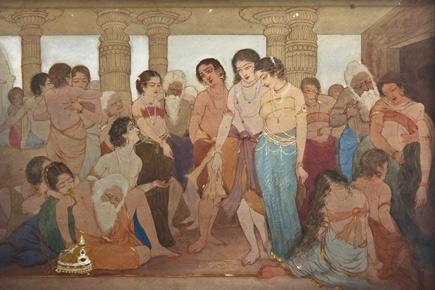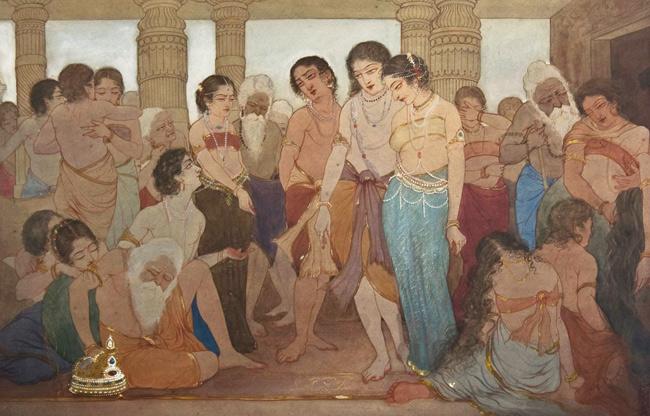Next week, an exhibition and illustrated talk by artist Suhas Bahulkar will throw light on the Bombay School of art and its voyage over the years, from the 1870s to the 1950s

GH Nagarkar
The Bombay School of art originated in the late 1870s and flourished until the 1950s. Originating from the Sir JJ School of Art, it encompassed the European academic style of painting, landscape painting bearing the influence of Impressionism and Post-Impressionism, the Bombay Revivalism and the style of the Bombay Progressive Group.

Artworks by GH Nagarkar
Throwing light on this style is the exhibition Pravaha — Glimpses of the Art of Bombay School. Preceding the inaugural ceremony is an illustrated talk by artist Suhas Bahulkar who is known for his portrait art. He also taught at the Sir JJ School of Art from 1975-95.
ADVERTISEMENT

Walter Langhammer
“You can glimpse 58 rare works by Bombay School artists such as Pestonjee Bomanjee, Rustom Sisodia, Abalal Rahiman, Gladstone Solomon and Walter Langhammer. It will also show early works by MF Husain, KH Ara and FN Souza. The artworks have been sourced from the archives of the Chhatrapati Shivaji Maharaj Vastu Sangrahalaya and the Jehangir Nicholson Art Foundation’s collection,” adds Dr Prasanna Mangrulkar, Assistant Curator.
Bahulkar reveals, “The talk will cover aspects of the Bombay School’s journey over 150 years. The Bengal School and the Bombay School were the notable schools then. Of these, the Bombay School was less documented.”
Looking back
During the British Raj, traditional artists lost out due to courtly patronage. But the government employed Indian artists to conduct economic surveys, document natural history, and produce ethnographic artworks. These artists were trained in Western techniques like perspective, light and shade, in a style known as the ‘Company School’, with Indian art and Western idioms.
In 1854, the East India Company decided to improve the practices of ‘native’ artisans by establishing art schools. By 1867, the British government set up 22 schools of industrial art that taught a uniform syllabus, based on the School of Industrial Arts at South Kensington, London. It gave rise to oil portraits, landscapes and academic nudes.
In 1851, Sir Jamsetjee Jeejeebhoy approached the British government to start an art school and offered a Rs 1 lakh donation. The School of Art and Industry was established in 1857. In 1878, the School shifted to the present location, and Sir JJ School of Art became the cradle of the ‘Bombay School’.
By the early 20th century, with the rise of the Swadeshi Movement, the art movement began looking for its roots in indigenous traditions (termed as Bombay Revivalism). When Gladstone Solomon became the Principal, he encouraged murals. Post his retirement (1936), the focus shifted to pictorial design. In 1947, the Bombay Progressive Artists’ Group was formed (most weren’t from Sir JJ School), with a focus on modernism. But with a surge of individualism and a lack of clear ideology, the group fell apart.
Talk: June 10, 5.45 pm
At: CSMVS, Fort.
Exhibition: June 10 to August 17, 10.15 am to 6 pm
 Subscribe today by clicking the link and stay updated with the latest news!" Click here!
Subscribe today by clicking the link and stay updated with the latest news!" Click here!







